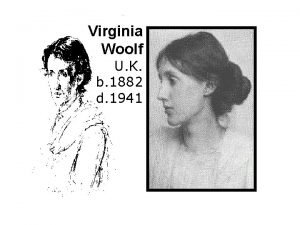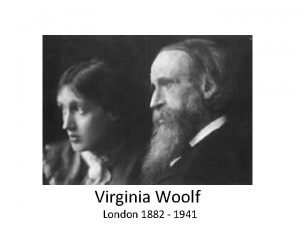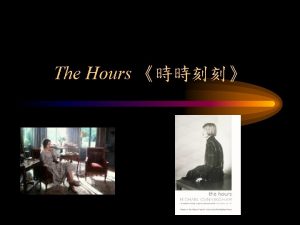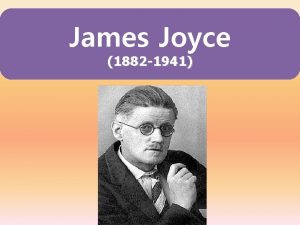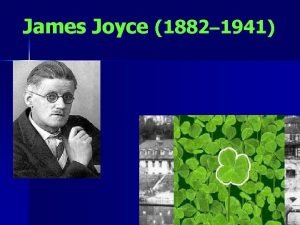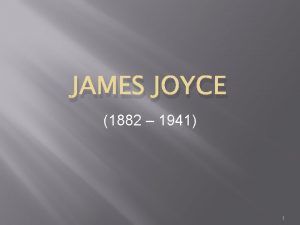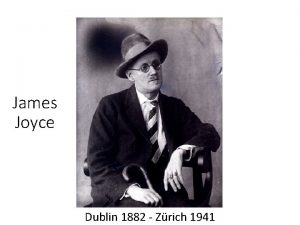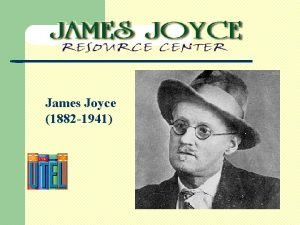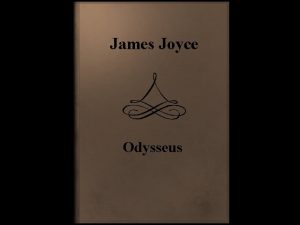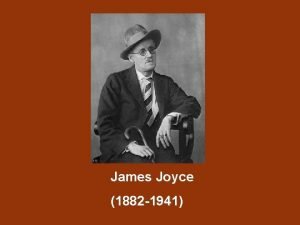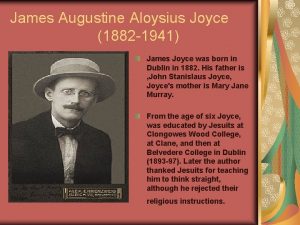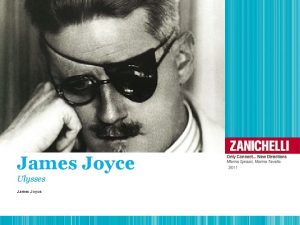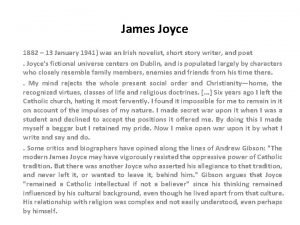Introducing James Joyce 1882 1941 n three eras












- Slides: 12

Introducing James Joyce 1882 -1941 n three eras: Victorian, Early Modern, Late Modern n Irish Catholic ~ High Modernist ~ European Exile n

Irish Catholic n n An oppressed people (British colony) Agitation of late 1800’s Parnell and Home Rule Betrayal and disappointment

Early Years n n n Born into new Catholic middle class Family’s decline Jesuit education Education in the City of Dublin Vocation: from Priest to Poet

Love and Exile n n n Experiences Paris (1902 -03) Death of Mother (1903) Meets Nora Barnacle (June 1904) Leaves Ireland (October 1904) The Continent: Trieste, Rome, Zurich, Paris

Dubliners (1914) n n n 15 stories, written 1903 -4 (12), 1906 (2) and 1907 (“The Dead”) “My intention was to write a chapter of the moral history of my country and I chose Dublin for the scene because that city seemed to me the center of paralysis. ” “I always write about Dublin, because if I can get to the heart of Dublin, I can get to the heart of all the cities of the world. In the particular is contained the universal. ”

Joyce on Dubliners n n n “I have tried to present it to the indifferent public under four of its aspects: childhood, adolescence, maturity and public life. The stories are arranged in this order. ” “I have written it for the most part in a style of scrupulous meanness. ” “What’s the matter with you is that you’re afraid to live. You and people like you. This city is suffering from hemiplegia [paralysis] of the will. ”

A Portrait of the Artist as a Young Man (1916) n n Highly autobiographical (but beware!) A declaration of artistic independence Highly modernist: stream-of-consciousness, confluence of naturalism and symbolism Long composition: essay (“A Portrait of the Artist as a Young Man” ~ 1904), early novel (Stephen Hero ~ 1904 -06), finished novel (190708, 1914)

Importance of A Portrait n n THE Modernist bildungsroman (novel of education) and kunstlerroman (novel of the making of an artist) Liberating style and themes The anguish and exhilaration of gaining power over language Develops through style as much as through plot

Joyce and Modernism n n n The Experience of World War I (1914 -1918) Pound’s dictum: “Make it new” The Great Questioners: Marx, Nietzsche, Darwin, Freud An era of Revolution Fragmentation Order: myth, art

Ulysses (1922) n n n The great modernist epic Mythic method: the past and the present Extends Joyce’s experiments with style to the extreme: style becomes the plot “With me, the thought is always simple” “I have discovered that I can do anything with language I want”

Finnegans Wake (1939) n n Composed from 1922 to 1939 “Work in Progress” (only Nora knew the title) An unclassifiable work: Dream? Scripture? Joke? Philosophy of language? Myth? The Dream of Everyman and Everywoman, in Everylanguage

Death of Joyce n n A war refugee: fled Paris, arrived in Switzerland Illness of daughter Lucia Despondent over reception of Finnegans Wake Died on 13 January, 1941, 3 weeks after reaching Switzerland

